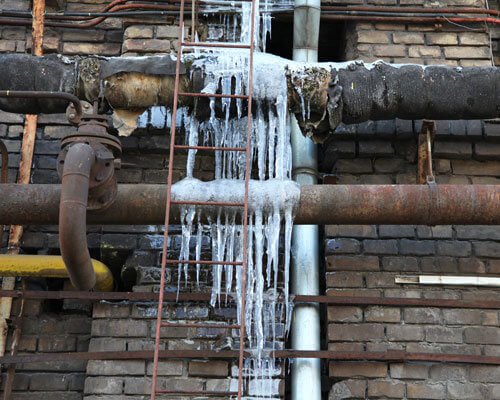Just how do you really feel when it comes to How to Prevent Your Pipes From Freezing?

Winter can ruin your plumbing, specifically by freezing pipelines. Below's how to stop it from occurring and what to do if it does.
Intro
As temperature levels decrease, the threat of frozen pipelines rises, potentially leading to costly fixings and water damage. Comprehending exactly how to avoid frozen pipes is important for property owners in cool climates.
Prevention Tips
Protecting susceptible pipelines
Wrap pipes in insulation sleeves or use warm tape to secure them from freezing temperatures. Concentrate on pipes in unheated or outside areas of the home.
Home heating techniques
Keep indoor rooms appropriately heated up, particularly areas with pipes. Open cabinet doors to permit cozy air to circulate around pipelines under sinks.
Exactly how to identify frozen pipes
Search for lowered water flow from faucets, unusual smells or noises from pipes, and noticeable frost on subjected pipelines.
Long-Term Solutions
Architectural modifications
Take into consideration rerouting pipes far from outside walls or unheated locations. Include extra insulation to attic rooms, cellars, and crawl spaces.
Updating insulation
Invest in high-quality insulation for pipes, attic rooms, and wall surfaces. Correct insulation helps maintain constant temperature levels and lowers the threat of frozen pipes.
Shielding Outdoor Pipes
Yard hoses and outside faucets
Separate and drain garden hoses before winter season. Install frost-proof spigots or cover exterior taps with insulated caps.
Understanding Frozen Pipes
What triggers pipes to ice up?
Pipelines ice up when subjected to temperatures listed below 32 ° F (0 ° C) for extended periods. As water inside the pipes freezes, it increases, putting pressure on the pipe walls and possibly causing them to break.
Threats and damages
Icy pipelines can bring about water disruptions, residential or commercial property damages, and pricey repair services. Burst pipelines can flood homes and create substantial structural damage.
Indicators of Frozen Water Lines
Recognizing frozen pipes early can prevent them from bursting.
What to Do If Your Pipelines Freeze
Immediate activities to take
If you presume icy pipes, maintain faucets open to eliminate stress as the ice melts. Utilize a hairdryer or towels soaked in warm water to thaw pipelines slowly.
Verdict
Stopping frozen pipes needs positive procedures and quick responses. By recognizing the reasons, indicators, and safety nets, homeowners can secure their pipes during cold weather.
5 Ways to Prevent Frozen Pipes
Drain Outdoor Faucets and Disconnect Hoses
First, close the shut-off valve that controls the flow of water in the pipe to your outdoor faucet. Then, head outside to disconnect and drain your hose and open the outdoor faucet to allow the water to completely drain out of the line. Turn off the faucet when done. Finally, head back to the shut-off valve and drain the remaining water inside the pipe into a bucket or container. Additionally, if you have a home irrigation system, you should consider hiring an expert to clear the system of water each year.
Insulate Pipes
One of the best and most cost-effective methods for preventing frozen water pipes is to wrap your pipes with insulation. This is especially important for areas in your home that aren’t exposed to heat, such as an attic. We suggest using foam sleeves, which can typically be found at your local hardware store.
Keep Heat Running at 65
Your pipes are located inside your walls, and the temperature there is much colder than the rest of the house. To prevent your pipes from freezing, The Insurance Information Institute suggests that you keep your home heated to at least 65 degrees, even when traveling. You may want to invest in smart devices that can keep an eye on the temperature in your home while you’re away.
Leave Water Dripping
Moving water — even a small trickle — can prevent ice from forming inside your pipes. When freezing temps are imminent, start a drip of water from all faucets that serve exposed pipes. Leaving a few faucets running will also help relieve pressure inside the pipes and help prevent a rupture if the water inside freezes.
Open Cupboard Doors
Warm your kitchen and bathroom pipes by opening cupboards and vanities. You should also leave your interior doors ajar to help warm air circulate evenly throughout your home.

Do you like reading up on 6 Ways to Prevent Frozen Pipes? Create feedback directly below. We'd be happy to hear your insights about this posting. We are looking forward that you come back again later on. Sharing is caring. You just don't know, you will be doing someone a favor. Thanks for your time invested reading it.
Schedule Now